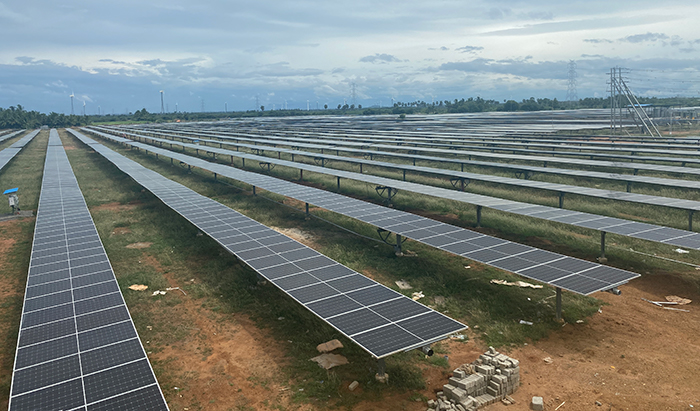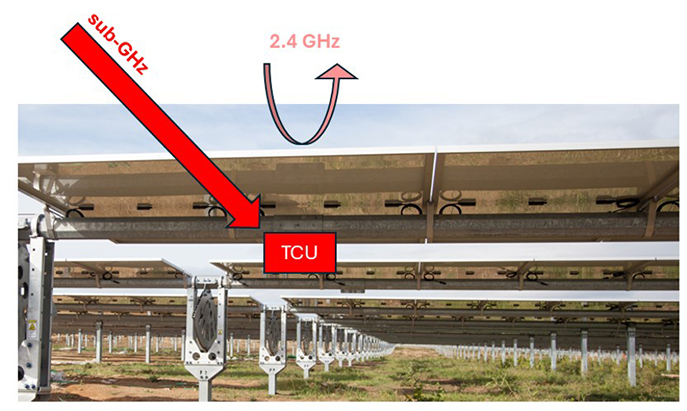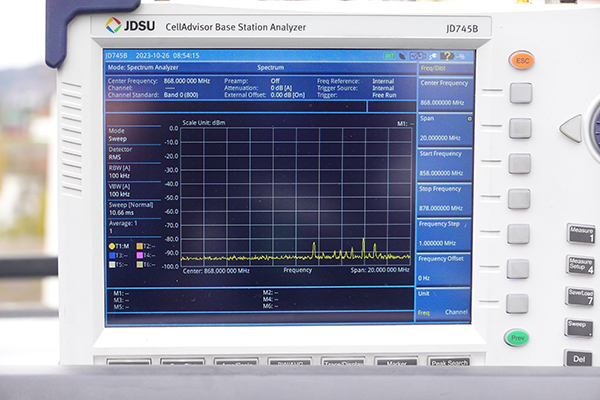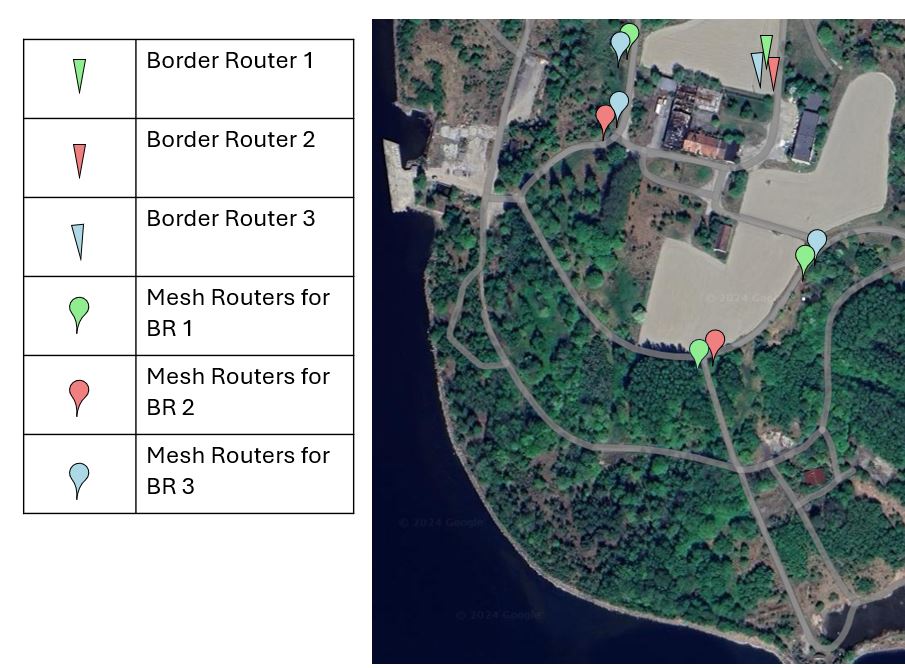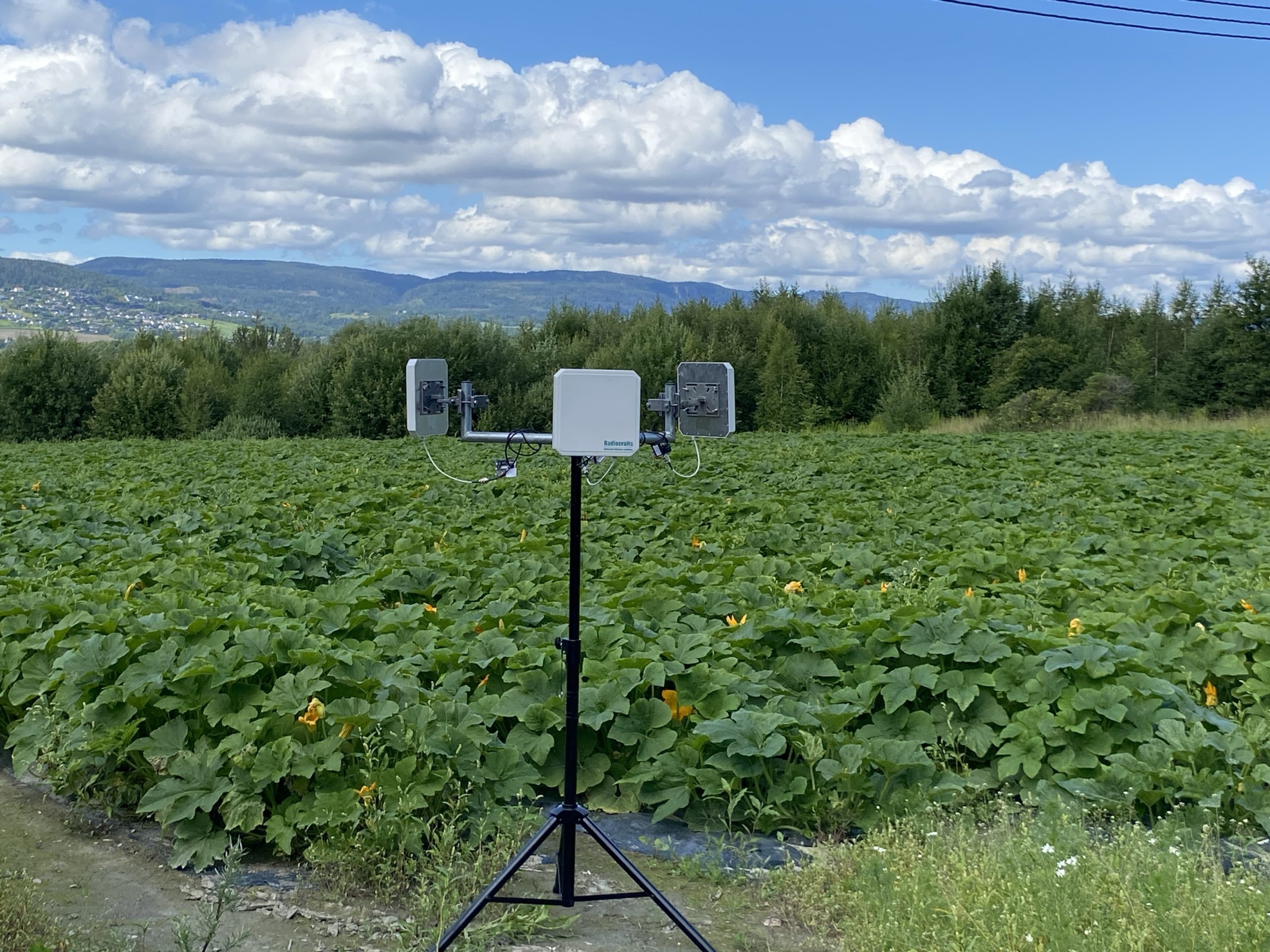Next-Gen Solar Evaluation Kit!
A quick and easy-to-use Solar Evaluation Kit designed to provide a prototyping solution for a variety of Solar applications including solar tracking, inverter and DC combiner monitoring, energy storage solutions and more!
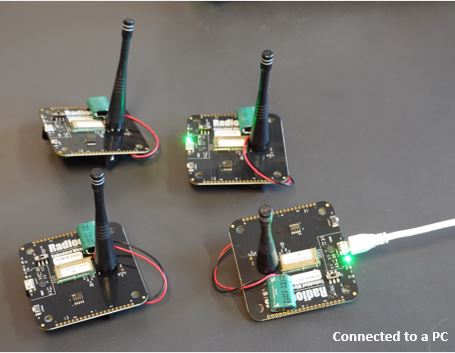
The Evaluation Kit Comes With:
- 4 Development Boards with RIIM Mesh modules
- 1 Mesh Router – Gateway connected to the power plant controller / datalogger
- 3 Mesh Routers – Devices in the utility-scale solar field or building rooftop. Ex: Solar trackers, electricity meters, DC combiners, inverters, irrometers.
- 4 AA Battery Holders
- 4 antennas
- 1 USB Cable
In this Solar installation evaluation kit setup, one board is connected to the PC and the other 3 boards are placed in the testing area (in your utility-scale solar field or building rooftop). In addition, to show case the low power consumption and high data throughput of the RIIM technology, all 4 boards are powered by 2 AA batteries and set to the 150 kbps data rate mode.
After powering the boards, you will run a premade python script on the PC to start up the mesh network. The PC shows you how the devices are connected, the signal strength, and the uplink and downlink latency when communicating with the power plant controller / datalogger.
Each of the mesh routers are capable of forwarding data packets between devices up to the power plant controller / datalogger while at the same time controlling solar trackers and inverters or logging energy data generated by the electricity meters, inverters, or other sensors.
The Solar Evaluation Kit takes full advantage of Radiocrafts’ market-leading Sub-GHz mesh module, RIIM, to provide long range (up to 84 x 84 km² or 52 x 52 mi²), low latency for both efficient inverter or solar tracker control and sensor data communication, unmatched reliability (99.99% successful packet delivery rate), and high data throughput with the 150 kbps data rate mode, for an efficient Solar installation offering simplified commissioning for quick rollouts and superb scaling capabilities.
Commissioning A Large Solar Tracking Installation Using RIIM Mesh
Radiocrafts visited one of our solar tracker customers to assist in commissioning their large scale installation. The results we will share with you now showcase why our RIIM mesh network is the optimal wireless technology for solar tracking among other applications as well.
RIIM outperforms most 2.4 GHz solutions in that it supports up to 700 devices (ex: tracker controllers) in a single network with longer range. This means that you require fewer mesh hops to reach devices located farther away, creating a system with lower latency.
In addition, Sub-GHz solutions support better radio penetration through solar tracker metal beams with less panel reflections offering a superior solution for installations in non line-of-sight or uneven terrain.
We also tested the latency for Firmware Over-The-Air Updates which takes a comparatively low 3 minutes when tested against many other Sub-GHz technologies.
In terms of commissioning, you have the option of placing a single gateway in the middle of the field which is capable of covering the entire field, or you can also use sector antennas.
Sector antennas are used to split the field into different sections, for example, in this particular installation we used 3 sector antennas. The benefit of using the sector antennas in this case is that you will get one third of the number of gateway placements required and a third of the number of fiber cables to lay out which leads to a decrease in cost and simplifies the installation significantly. You can also have a few thousand devices connected to a single gateway with such an installation.
Radiocrafts offers free support for antenna design, PCB trace antennas, and radio spectrum considerations!
Download our Wireless Technologies Selection Guide For Solar Tracking to learn more about the wireless communication options available in the market today (ex: Wi-SUN, LoRa, ZigBee) and their performance factors for Solar Tracking installations against RIIM.
Market-Leading Reliability With Distinct Channel Hopping
The images above represent a new technology feature from Radiocrafts, Distinct Channel Hopping, which is designed to make a wireless mesh network with significantly less packet collisions and overlaps in an area where several RIIM mesh networks are operating in close proximity.
The images to the right show the setup for a field installation in a crop field where we installed 3 different mesh networks in close proximity sending messages in 3 different directions using sector antennas.
What Distinct Frequency Hopping does is it allows you to send data packets in the same time slot but at different frequencies (on different channels) which creates a system where the data packets never overlap, reducing the possibility of packet collisions significantly. For example, looking at the image on the left you can see that in the first time slot, all 3 mesh networks sent a message on 3 different channels. In time slot 2, all 3 systems sent yet another message on 3 different channels from the previous time slot to ensure that the data packets do not overlap. In time slot 3, only one system sent a message which also did not overlap with the previous sending sequences. Even over several time slots, the messages never overlap, creating an ultra-reliable network including in environments where several RIIM networks are operating at the same time.
Do you want to test our Next-Gen Solar Evaluation Kit for your project? Email us at sales@radiocrafts.com or leave a message on our contact form to get yourself a kit!
Read more about Radiocrafts’ leading mesh solution, RIIM, for Solar Installations on our dedicated Solar landing page!

